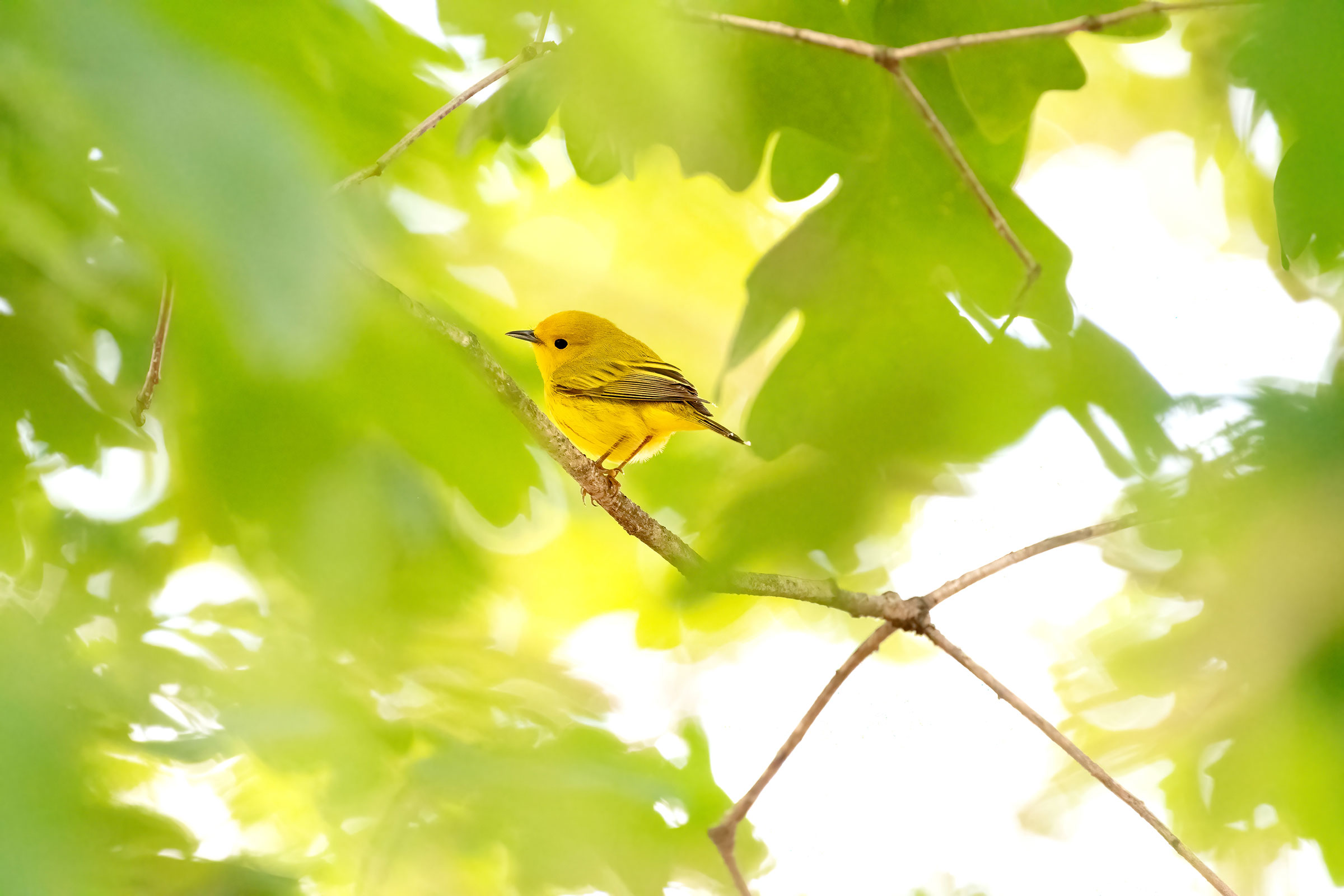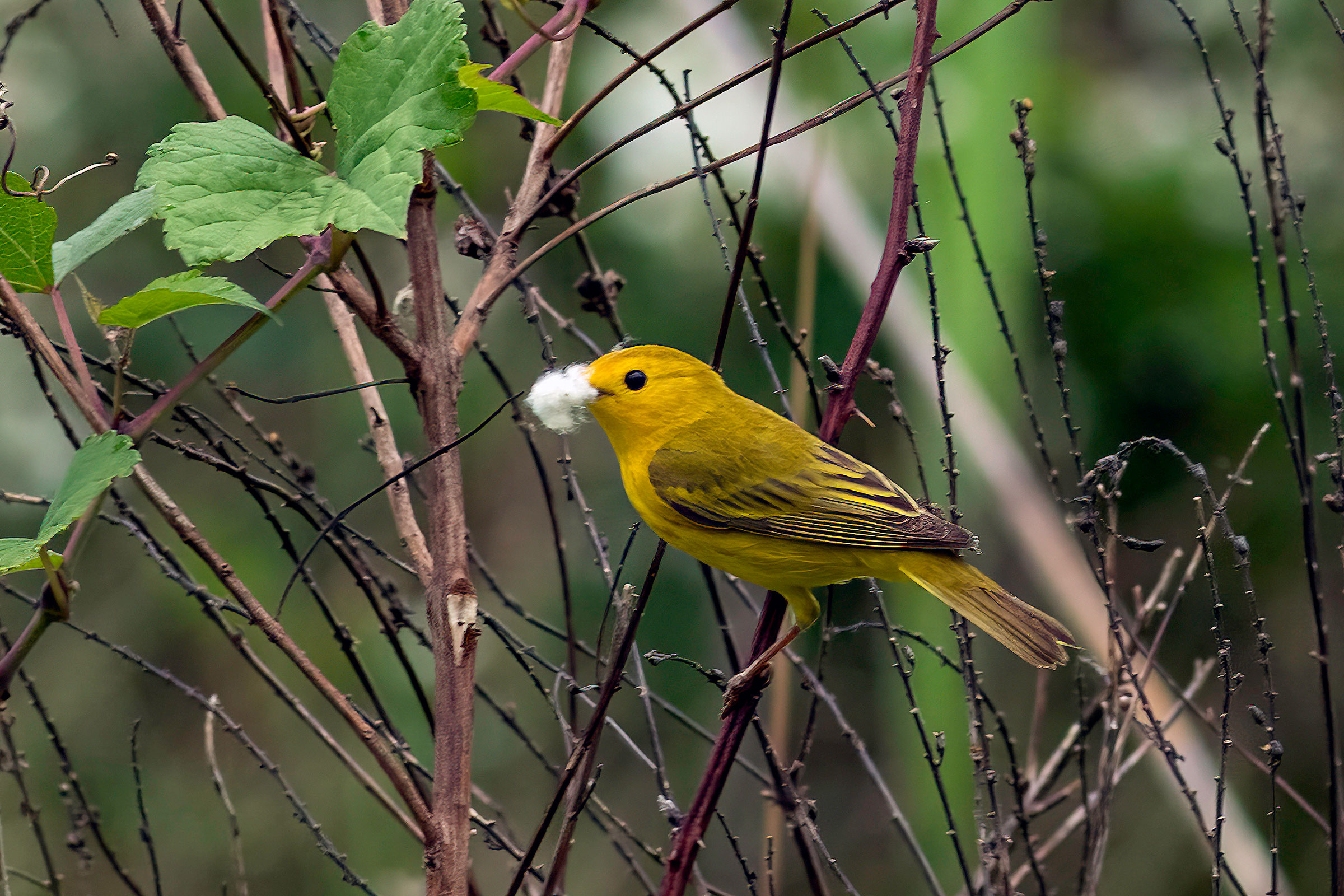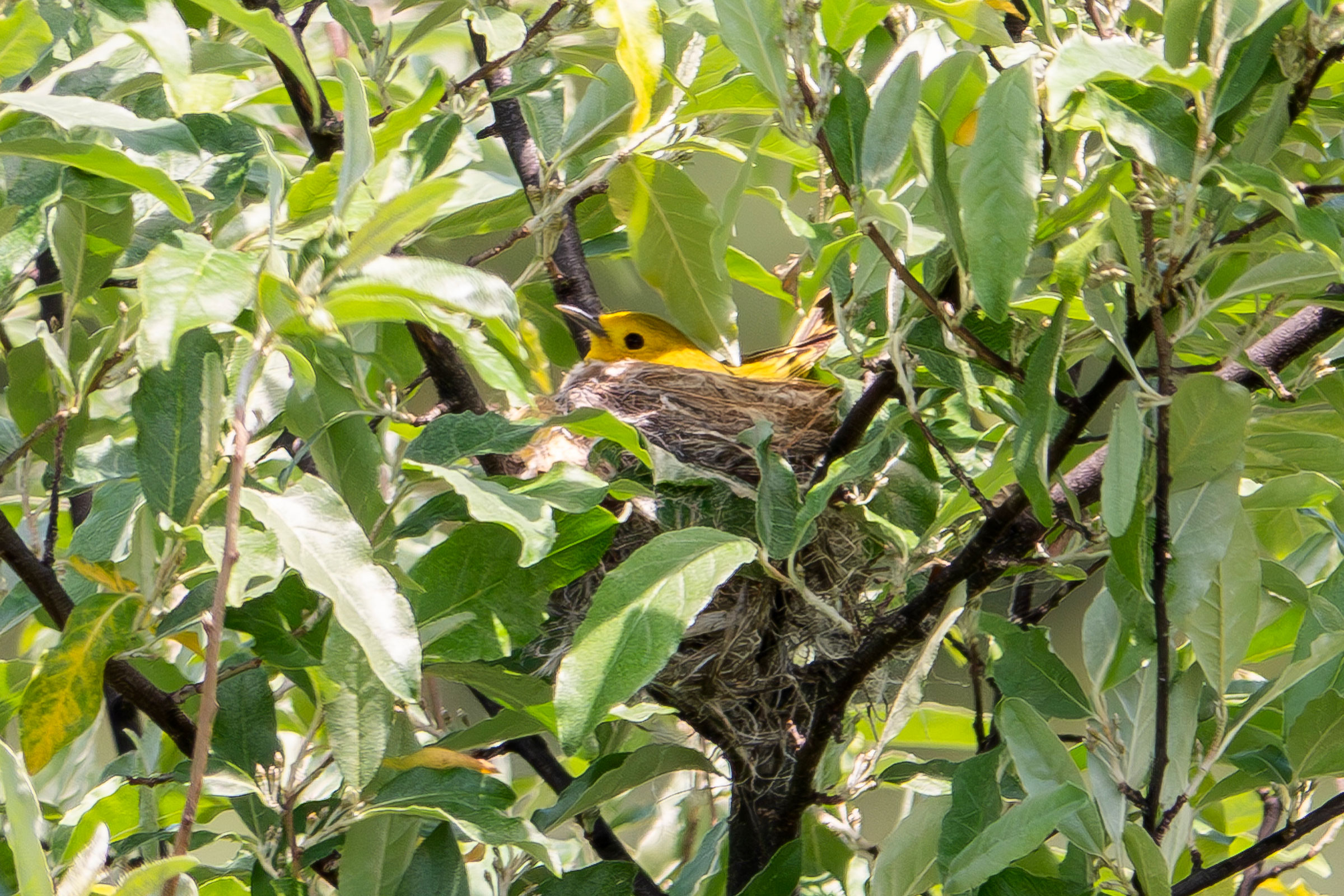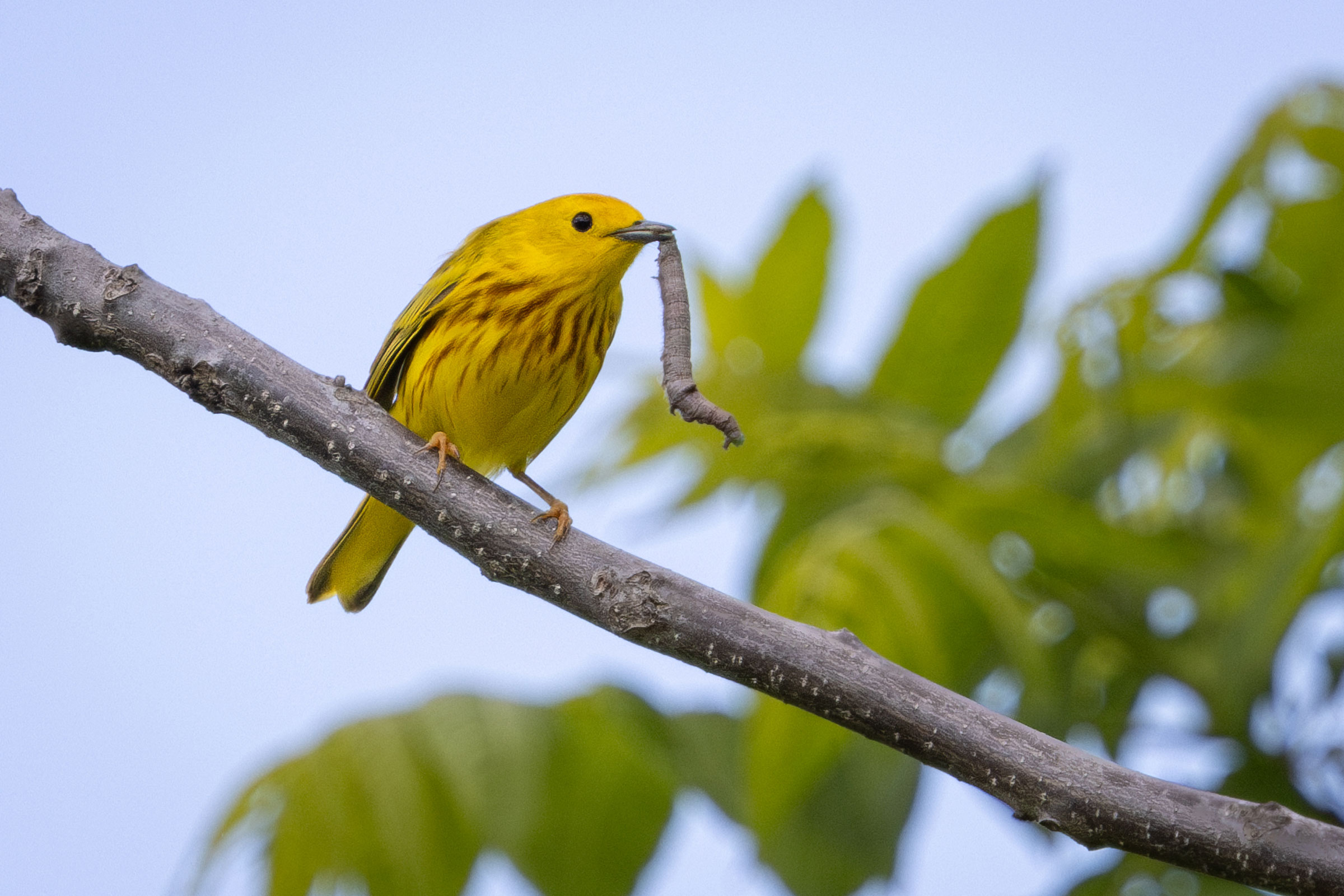Introduction
The Yellow Warbler is one of Virginia’s easiest warblers to spot and identify. With its bright yellow plumage, Yellow Warblers can be seen darting from shrub to shrub at the edges of wetlands, shrubby fields, small woodlots, and grassland habitats. Its song, a cheery sweet-sweet-sweet I’m so sweet, is as distinct and memorable as its lemony yellow color (Lowther et al. 2020).
Breeding Distribution
Yellow Warblers are found throughout the state, but they are most likely to occur in the Mountains and Valleys region (Figure 1). Given its broad range of suitable habitats, its likelihood of occurring increases as the proportion of forest cover, forest edge habitat, and agricultural lands increases within a block.
Due to model limitations, no distribution model could be developed for the First Atlas; thus, no change in distribution between Atlas periods could be determined (see Interpreting Species Accounts). For more information on its occurrence during the First Atlas, please see the Breeding Evidence section.

Figure 1: Yellow Warbler breeding distribution based on probability of occurrence (Second Atlas, 2016–2020). This map indicates the probability that this species will occur in an Atlas block (an approximately 10 mi2 [26 km2] survey unit) based on environmental (including habitat) factors and after adjusting for the probability of detection (variation in survey effort among blocks).
Breeding Evidence
Yellow Warblers were confirmed breeders in 26 blocks and 18 counties and probable breeders in an additional 32 counties, with many of these breeding observations occurring in the Mountains and Valleys region (Figure 2). During the First Atlas, a similar pattern of breeding observations was recorded; however, more breeding confirmations were documented, which is consistent with the species’ population decline in the state (see Population Status) (Figure 3).
The earliest confirmed breeding behavior was recorded on May 1 when nest building was observed. Breeding continued to be recorded until the end of July when a distraction display was observed. Additionally, most breeding was confirmed through observations of occupied nests (May 5 – June 14), adults carrying food (May 16 – July 5), and adults feeding young (June 10 – June 30) (Figure 4).
For more general information on the breeding habits of this species, please refer to All About Birds.
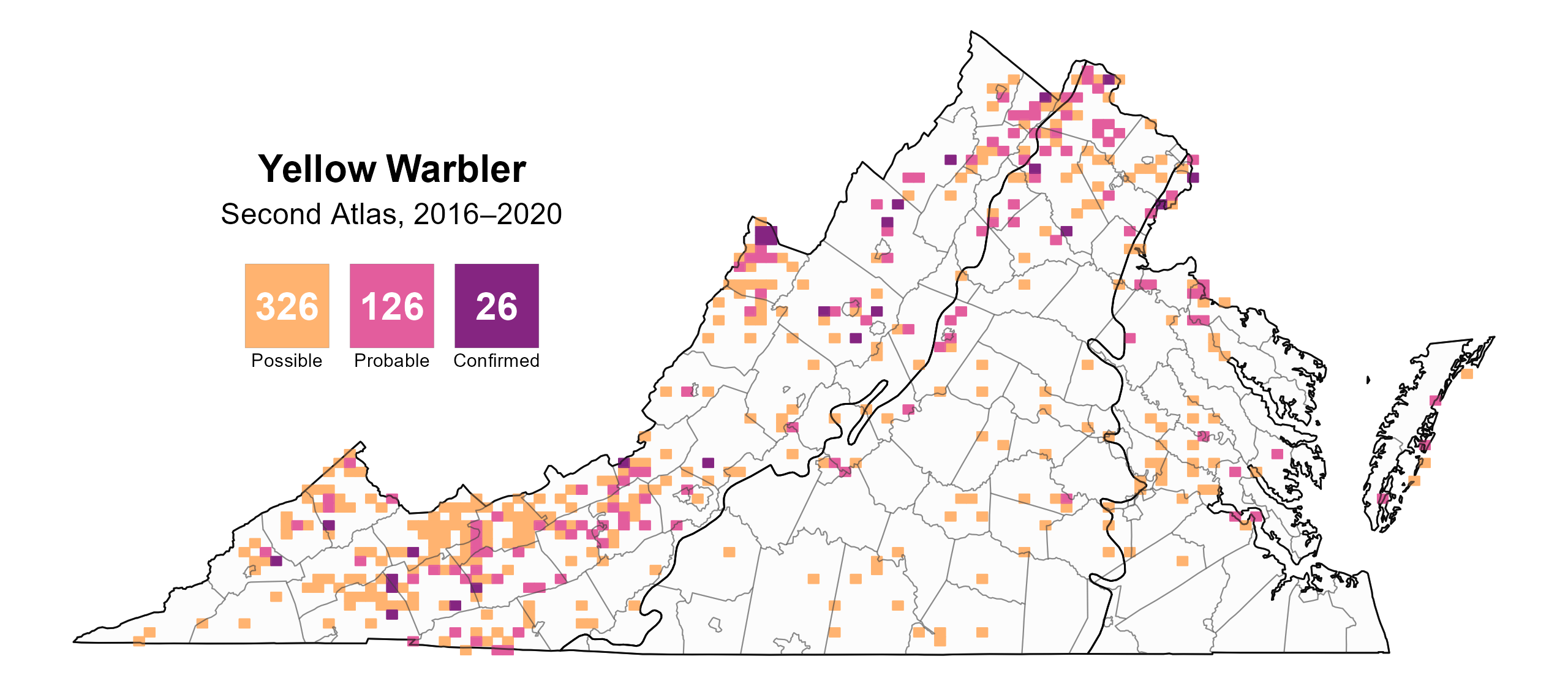
Figure 2: Yellow Warbler breeding observations from the Second Atlas (2016–2020). The colored boxes illustrate Atlas blocks (approximately 10 mi2 [26 km2] survey units) where the species was detected. The colors show the highest breeding category recorded in a block. The numbers within the colors in the legend correspond to the number of blocks with that breeding evidence category.
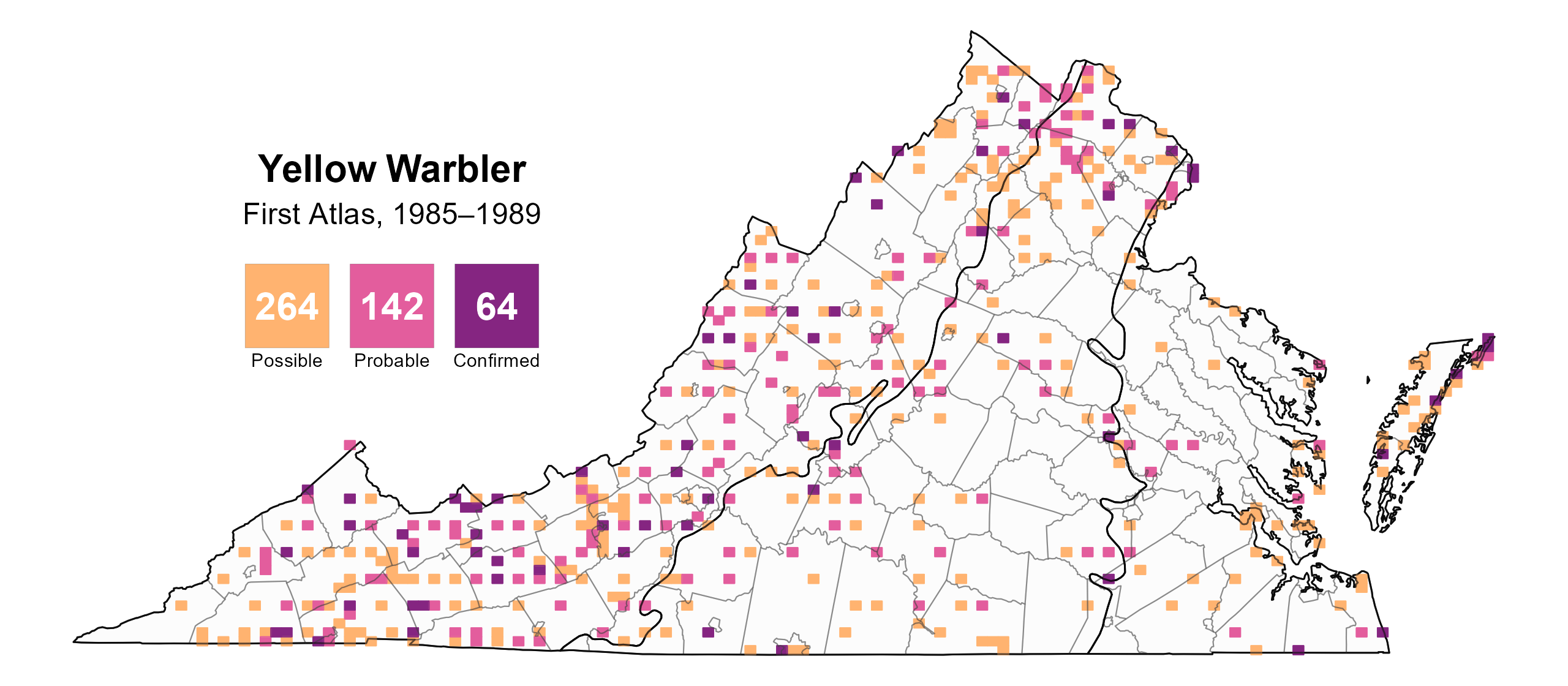
Figure 3: Yellow Warbler breeding observations from the First Atlas (1985–1989). The colored boxes illustrate Atlas blocks (approximately 10 mi2 [26 km2] survey units) where the species was detected. The colors show the highest breeding category recorded in a block. The numbers within the colors in the legend correspond to the number of blocks with that breeding evidence category.
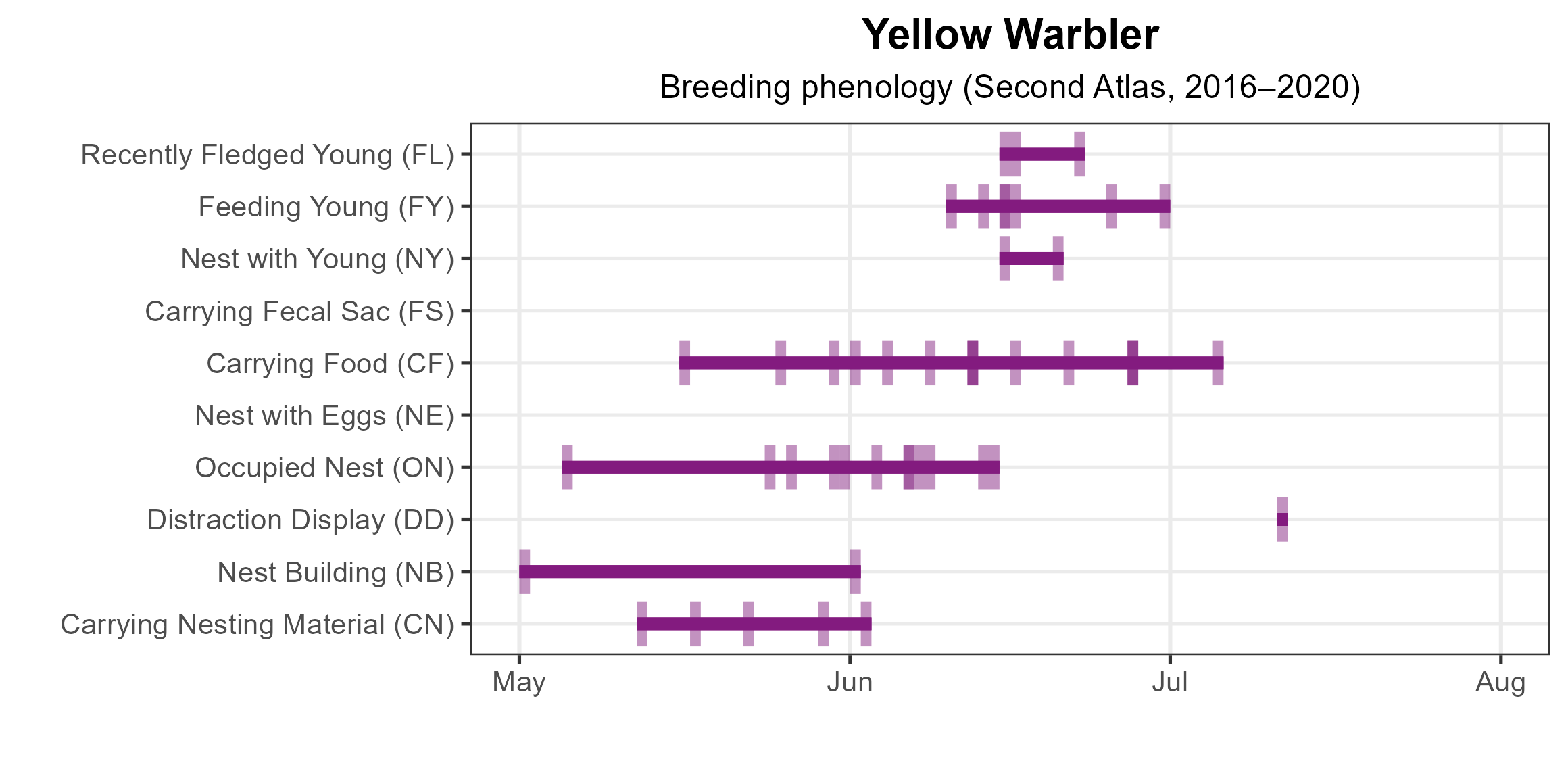
Figure 4: Yellow Warbler phenology: confirmed breeding codes. This graph shows a timeline of confirmed breeding behaviors. Tick marks represent individual observations of the behavior.
Population Status
Yellow Warbler relative abundance was estimated to be highest in the Mountains and Valleys region and generally lower outside of this region. One notable exception was the Eastern Shore, where predicted abundance was higher than other areas of the Piedmont and Coastal Plain regions (Figure 5).
The total estimated Yellow Warbler population in the state is approximately 47,000 individuals (with a range between 31,000 and 73,000). Based on the North American Breeding Bird Survey (BBS), the Yellow Warbler population declined by a significant rate of 3.81% annually from 1966–2022 in Virginia, and between Atlas periods, its population declined by an even greater amount, a significant 5.03% per year from 1987–2018 (Hostetler et al. 2023; Figure 6).

Figure 5: Yellow Warbler relative abundance (Second Atlas, 2016–2020). This map indicates the predicted abundance of this species at a 0.4 mi2 (1 km2) scale based on environmental (including habitat) factors. Abundance values are presented on a relative scale of low to high.
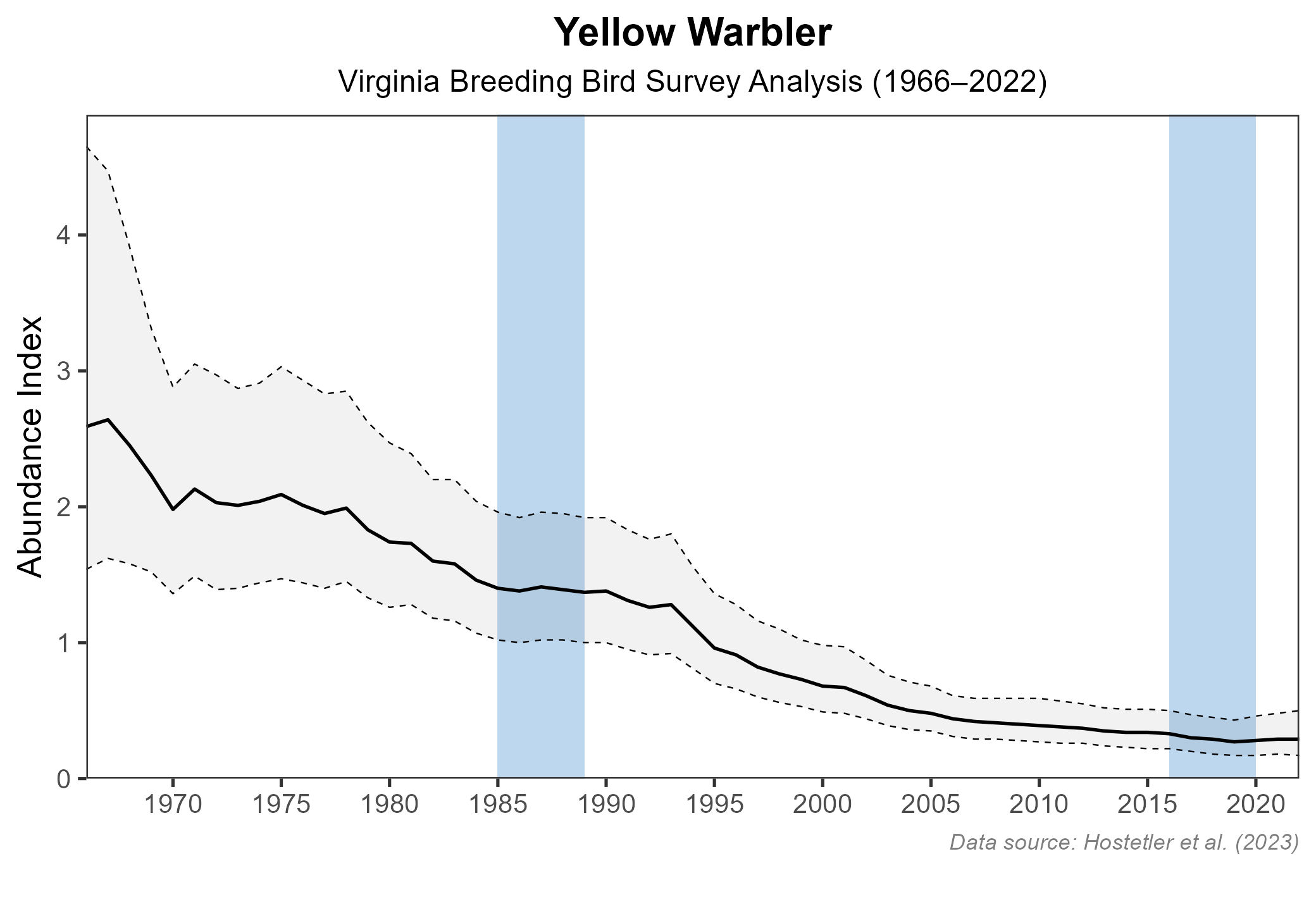
Figure 6: Yellow Warbler population trend for Virginia as estimated by the North American Breeding Bird Survey. The vertical axis shows species abundance; the horizontal axis shows the year. The solid line indicates the estimated population trend; there is a 97.5% probability that the true population trend falls between the dashed lines. The shaded bars indicate the First and Second Atlas periods.
Conservation
The Yellow Warbler is one of the most abundant and widespread warblers in North America. In nearly all portions of its range, its populations are stable or increasing (Lowther et al. 2020). However, in Virginia, this species’ populations are declining. This trend in Virginia is concerning and warrants additional research. As such, it is classified as a Tier III Species of Greatest Conservation Need (High Conservation Need) in Virginia’s 2025 Wildlife Action (VDWR 2025). One potential cause for the decline could be loss of shrubland and grassland habitat and shrubby wetlands on which nesting Yellow Warblers depend.
Interactive Map
The interactive map contains up to six Atlas layers (probability of occurrence for the First and Second Atlases, change in probability of occurrence between Atlases, breeding evidence for the First and Second Atlases, and abundance for the Second Atlas) that can be viewed one at a time. To view an Atlas map layer, mouse over the layer box in the upper left. County lines and physiographic regional boundaries (Mountains and Valleys, Piedmont, and Coastal Plain) can be turned on and off by checking or unchecking the box below the layer box. Within the map window, users can hover on a block to see its value for each layer and pan and zoom to see roads, towns, and other features of interest that are visible beneath a selected layer.
View Interactive Map in Full Screen
References
Hostetler, J. A., J. R. Sauer, J. E. Hines, D. Ziolkowski, and M. Lutmerding (2023). The North American breeding bird survey, analysis results 1966–2022. U.S. Geological Survey, Laurel, MD, USA. https://doi.org/10.5066/P9SC7T11.
Lowther, P. E., C. Celada, N. K. Klein, C. C. Rimmer, and D. A. Spector (2020). Yellow Warbler (Setophaga petechia), version 1.0. In Birds of the World (A. F. Poole and F. B. Gill, Editors). Cornell Lab of Ornithology, Ithaca, NY, USA. https://doi.org/10.2173/bow.yelwar.01.
Virginia Department of Wildlife Resources (VDWR) (2025). Virginia wildlife action plan. Virginia Department of Wildlife Resources, Henrico, VA, USA. 506 pp.


